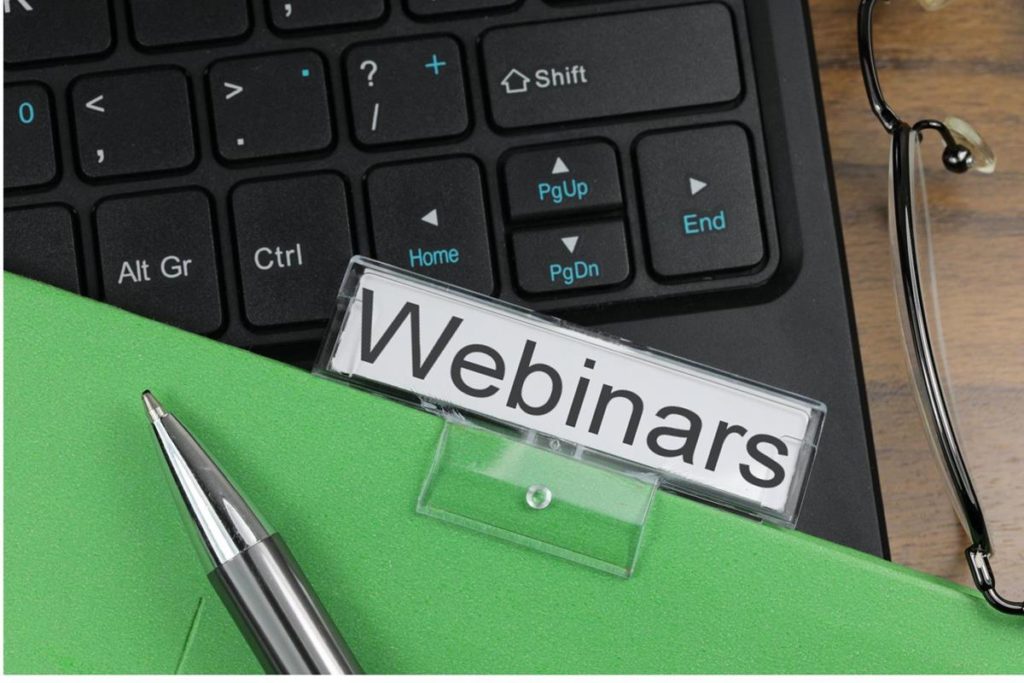In a world increasingly governed by digital engagement, webinars have proven to be an invaluable tool for nonprofits. Leveraging the power of real-time interaction, nonprofit webinars offer a means to inspire, educate, and motivate a geographically dispersed audience.
In 2020 alone, the webinar platform usage surged by 330% due to the pandemic, highlighting their crucial role in remote connectivity. This comprehensive guide aims to furnish nonprofits with the necessary knowledge about webinars: what they are, their salient features, how to host them effectively, and how to market them to achieve maximum engagement.
Understanding Webinars
A webinar, short for ‘web seminar’, is a live, virtual event that is executed online. It is an interactive session where you can give, receive and discuss information. The most important components of a webinar are the audio and visual elements. Participants can see slide presentations, watch live or recorded video and listen to the presenter speaking.
In the context of a nonprofit, webinars can be used for a multitude of purposes. From awareness campaigns, fundraising efforts, educational programs to community building, webinars offer a scalable platform that nonprofits can leverage to reach and engage a global audience, without the need for physical presence or substantial logistical efforts.
If that’s not clear enough, the excellent video below sums up exactly what a webinar is in just two minutes…
1. Prominent Features of Webinars
Webinars offer unique features that set them apart from other modes of communication. These features offer convenience and flexibility to both hosts and attendees while enhancing engagement. In this section, we’ll take an in-depth look at these features.
Interactivity
One of the primary features of webinars is interactivity. Webinars provide features such as polls, live chats, and Q&A sessions. This direct engagement not only enhances the user experience but also encourages active participation, leading to better understanding and knowledge retention.
Scalability
Nonprofit webinars can host a handful to several thousand attendees simultaneously, overcoming geographical boundaries. This makes it an excellent tool for nonprofits looking to reach a wide audience without the constraints of physical location.
Real-Time and Recorded Options
Webinars can be conducted live or pre-recorded and then streamed at a scheduled time. Live webinars enable real-time interaction, giving a feeling of immediacy and engagement. On the other hand, recorded webinars offer flexibility for those who cannot attend the live session, as they can view the content at their convenience.
Analytics
Webinar platforms often come with robust analytical tools. They can provide valuable data on attendee demographics, engagement level (e.g., number of active participants, poll results, questions asked), and attendee behavior (e.g., join and drop-off times), all of which are vital for assessing the success of the webinar and planning future ones.
Integration
Webinars can integrate with numerous marketing tools and social media platforms, making it easier to promote the webinar, register participants, and follow up after the event. Integration with CRM systems also enables seamless data transfer, ensuring efficient attendee management before, during, and after the webinar.

2. Things to Consider Before Hosting Your Own Webinar
Hosting a successful webinar requires careful planning and thoughtful decision-making. From defining the purpose and understanding your audience, to content creation and technical preparation, there are several factors you need to consider. We will explore these factors in this section.
Purpose
Every webinar must have a clear and defined purpose. Are you looking to educate the public about a certain cause? Are you trying to raise funds for a project? Do you want to rally your supporters or attract new ones? Your purpose will guide your content creation, presentation style, and even your choice of webinar platform.
Audience
Understanding your target audience is key to a successful webinar. This includes knowing their interests, the issues they care about, their online behavior, and even their timezone. Having this information will help you create a webinar that resonates with your audience.
Content
The content of your webinar should align with your purpose and be valuable to your audience. It could be a presentation, a demonstration, a panel discussion, or a combination of these. The content should be engaging, informative, and interactive.
Technical Aspects
Technical glitches during a webinar can harm the user experience and may cause participants to leave. Therefore, choosing a reliable webinar platform that suits your needs, ensuring a stable internet connection, and testing all the technical aspects before the actual event are crucial.
Rehearsal
Conducting a rehearsal before the actual webinar can help identify potential issues and ensure a smooth delivery on the day of the webinar. This includes testing the webinar technology, checking the audio and visual components, and practicing the presentation.
3. Hosting Your Own Webinar
Hosting a webinar is much more than just going live on a digital platform. It involves meticulous planning, effective promotion, engaging presentation, and proactive audience engagement. We will break down each step in this section.
Planning
Firstly, determine the topic of the webinar and identify who the speaker(s) will be. Choose a date and time that will maximize attendance, considering the timezone of your target audience.
Promotion
Promote your webinar through various channels, such as email newsletters, social media, and your website. Collaborating with other organizations or influencers in your sector can also extend your reach.
Registration
Keep the registration process simple and straightforward. Use a registration form to collect relevant information from the attendees for future engagement and follow-ups.
Presentation
Ensure your presentation is visually appealing and engaging. Use high-quality images, infographics, and short videos to keep your audience’s attention. Also, incorporate interactive elements like polls or quizzes to maintain engagement.
Engagement
Promote interaction during the webinar through live chats, Q&A sessions, and polls. This not only keeps your audience engaged but also allows you to get instant feedback.
Follow-up
Following up after the webinar is just as important as the event itself. Send thank you emails, share a recording of the webinar, or provide additional resources. This helps to continue the conversation, build relationships, and gather feedback.

4. Marketing Your Nonprofit Webinars
A crucial aspect of a successful webinar is how it’s marketed. Using the right channels and tactics can significantly increase your webinar’s reach and impact. This section will guide you on how to effectively market your webinar using various methods, including email marketing, social media, partnerships, and SEO.
Email Marketing
Send personalized invitation emails to your existing subscribers or donor list. Make sure the email is engaging, provides all the necessary information about the webinar, and has a clear call-to-action.
Social Media
Promote your nonprofit webinars on social media platforms like Facebook, Twitter, LinkedIn, and Instagram. Create engaging posts, use relevant hashtags, and encourage followers to share the event.
Partnerships
Partnering with other organizations or influencers can increase your reach. They can help promote your webinar to their network, leading to more registrations.
Website and Blog
Use your website homepage or blog to promote your nonprofit webinars. Write a blog post about the upcoming webinar or create a pop-up banner on your website.
Paid Advertising
If you have a marketing budget, consider using Google AdWords, social media ads, or retargeting ads to reach a wider audience.
SEO
Optimize your webinar title, description, and content for search engines. Use relevant keywords to increase organic visibility.
Nonprofit Webinars: Conclusion
Nonprofit webinars are an efficient and effective way for charities to engage with their community, spread their message, and even raise funds. They offer interactivity, scalability, and convenience that traditional seminars or workshops can’t match. With careful planning, effective hosting, and strategic marketing, your nonprofit can leverage webinars to connect with your audience on a deeper level, regardless of where they are in the world.
As we move forward in the digital age, it’s crucial for nonprofits to adapt and make the most of these technological advancements. Embracing webinars is an excellent start.
